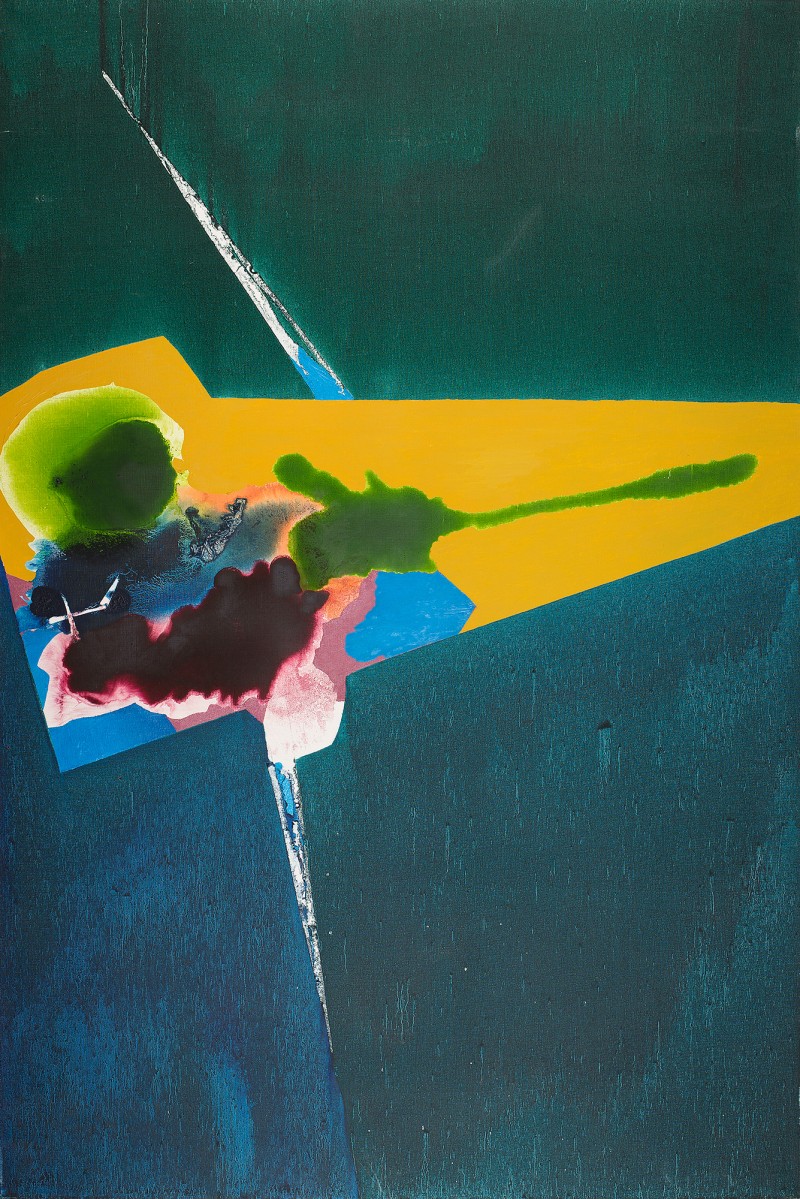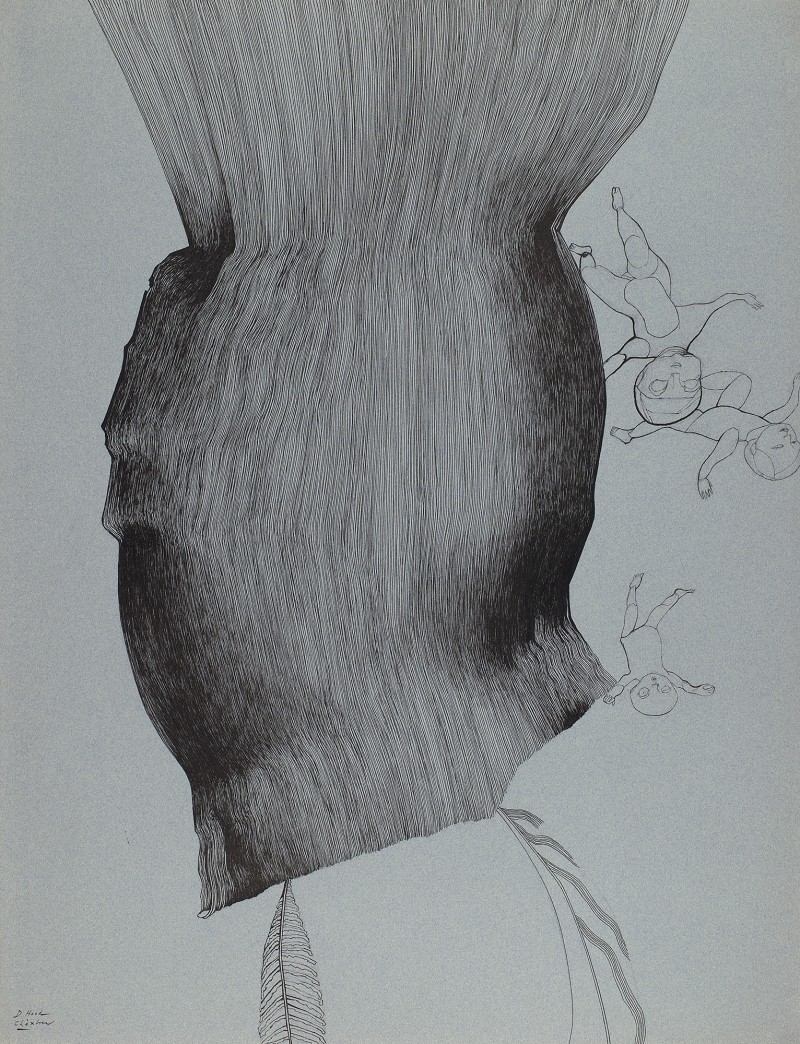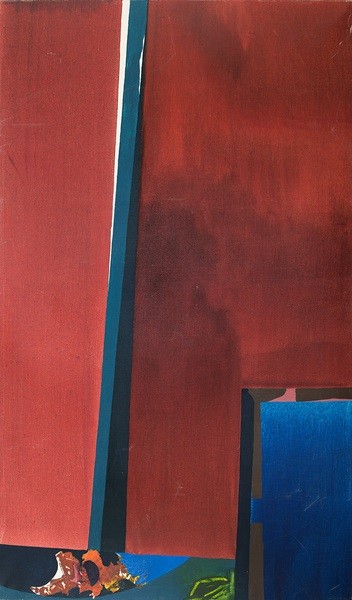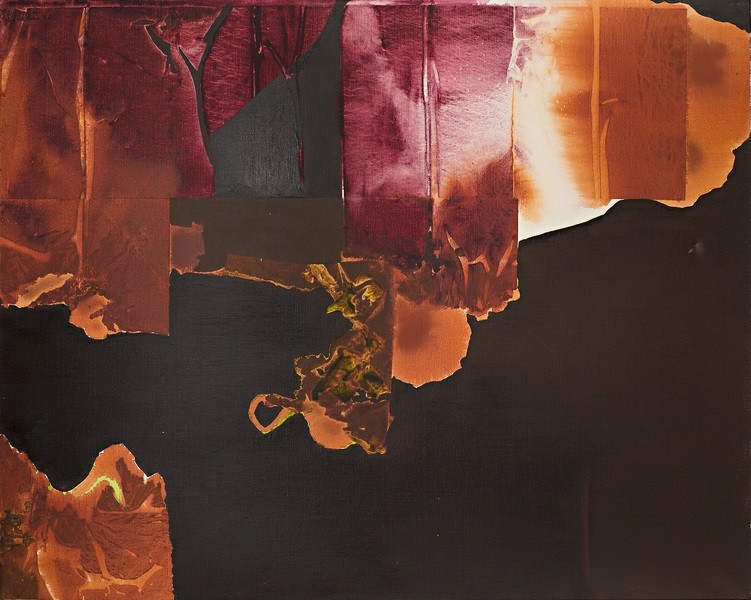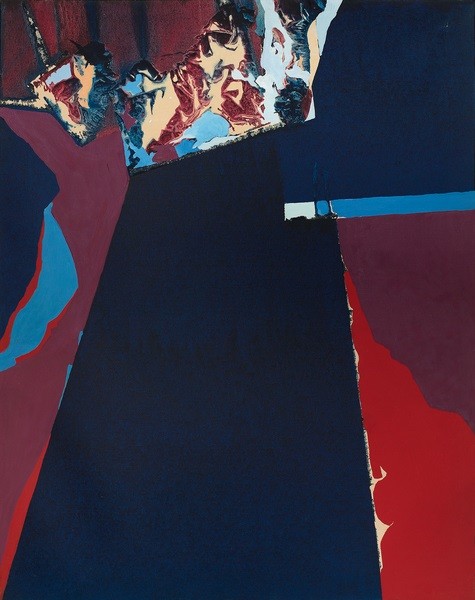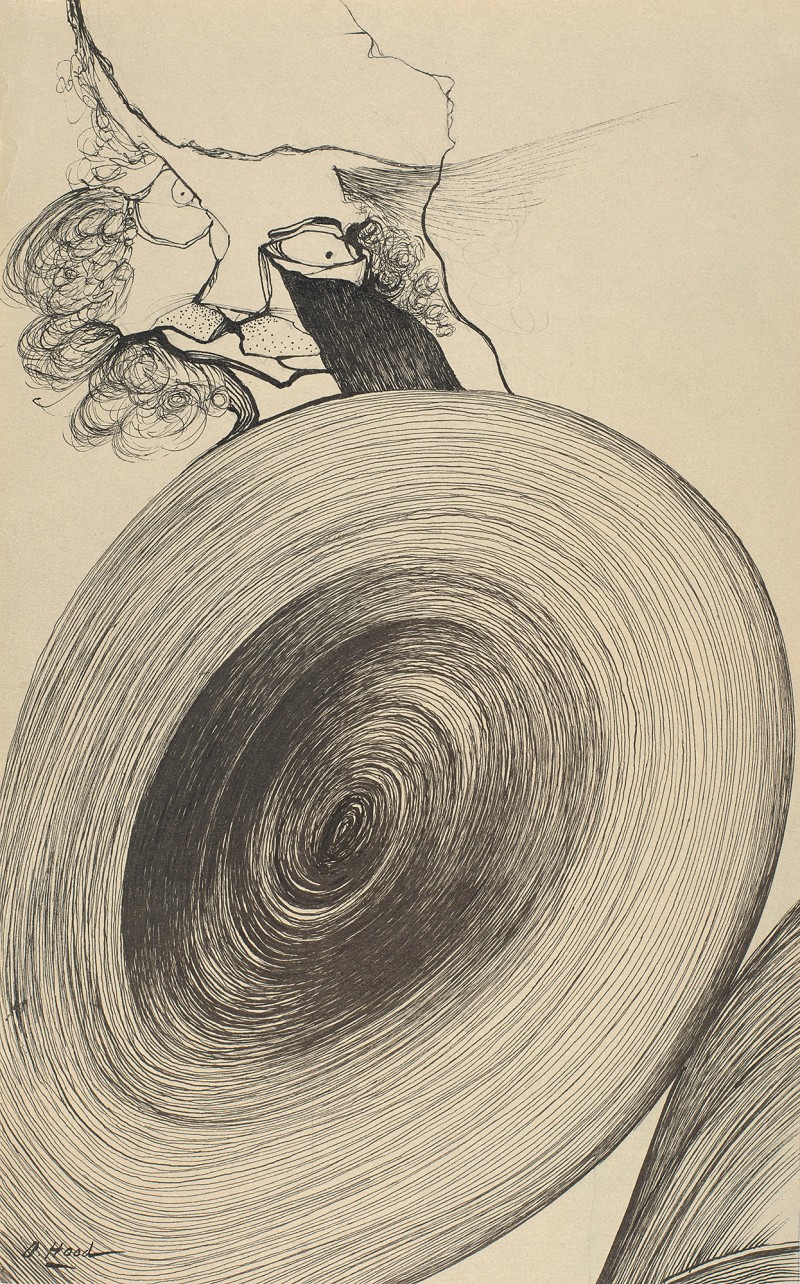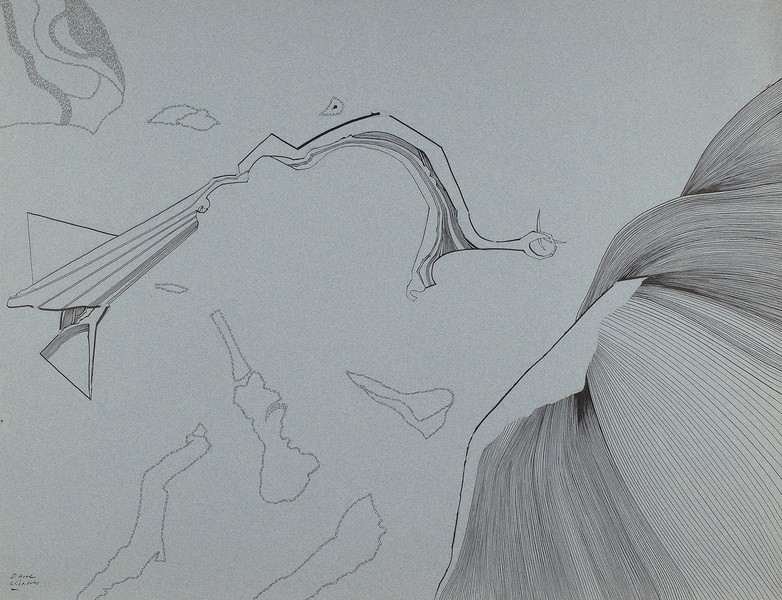The eye is our own earthly right of possession of the cosmic orbs.
In 1937, at the age of 19, Hood escaped from Texas to the Rhode Island School of Design before moving to New York City. In 1941 she drove to Mexico, which would be her primary residence for the next 20 years. There she befriended the great Mexican muralist José Clemente Orozco and took part in the dynamic scene (in Puebla and Mexico City) of painters, writers, and musicians – a scene that was highly infused by surrealism, under the influence of many European artists who had fled their war-torn continent (Leonora Carrington, Luis Buñuel, Benjamin Péret, Alice Rahon or Wolfgang Paalen). Indeed, Mexico was one of the centers where the baton of the avant-garde was being passed from Europe to the Americas at that time.
If her works from the 1940’s have a tendency toward a simplification of forms, it was in the 1950’s that she embraced the language of abstraction. She also began applying sand to her canvases, not only to experiment with different textures but, more important, to connect those abstract landscapes to natural elements. In the early 1960’s, back in Houston, Hood formalized her practice and created her first large abstract paintings, unique blends of color field and surrealism that depicted “abstract emotional landscapes,” as she herself defined them, and revealed her inner experience.
While the Greenbergian ideology was based on a refusal of the artist’s subjectivity in the creation of the work of art, Hood felt free to explore her psyche and to fuse it with abstraction. Her work resolves the tension between the conception of the artwork as a pure hermetic form and the role of the artist’ subjectivity in the work’s creation. Not only did her distance from the art-world epicenter of New York slow down her recognition, but the personal artistic language she invented surely placed her outside any movement or school.
Dorothy Hood’s abstract compositions embody her spiritual and emotional relationship with the forces of nature, such as the vastness of skies and deserts, the poetry of rain, and the strength of lightning strikes. Each painting coalesces the vast experiences that define human existence, resulting in powerful abstractions. This links Hood to the great lineage of American artists, writers, and filmmakers who have explored the complex metaphorical and symbolic power of the land—where frontiers are pushed farther, where renewal balances danger, and where spiritual transcendence is possible. Hood’s “emotional landscapes” therefore open new perspectives within the history of painting.
Her drawings on paper of dreamlike landscapes, composed with bold yet fluid lines, reflect the same ethereal and spiritual qualities, but with a much more surrealistic content. Some of them incorporate ghostly and metamorphic human figures, which often blend with abstract forms. They suggest themes of transcendence and the merging of human and cosmic forces.
Like many artists of her generation, Hood was interested in non-Western knowledge and spirituality, from Zen Buddhism to the Native traditions of Mexico and the United States. The writings of the Indian philosopher Sri Aurobindo and the idea of the “cosmic orb”—relating to the expansive universe and the profound connection between the individual and the larger universal context—totally reshaped her relationship to the world, to nature, and of course to art.
Following her first retrospective, at the Contemporary Arts Museum Houston in 1970, the artist traveled extensively in Europe. The works in this exhibition were all painted in Switzerland between 1974 and 1975. This is the first time they have been shown since 1977.

